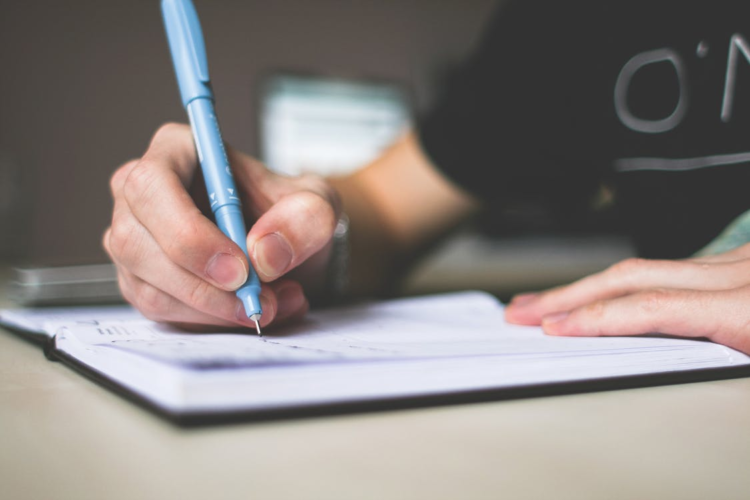You know that feeling when you’re reading someone’s essay and you get to the end of the first paragraph, but you have no idea what the rest of the essay is going to be about? Yeah, that’s not a good feeling. The purpose of an essay hook is to grab the reader’s attention and give them a preview of what’s to come in the rest of your paper. In this article, we’ll show you how to write a good hook and give you some examples of hooks you can use in your own essays.
What is an essay hook?
An essay hook is a writing device that’s used to “hook” the reader’s attention from the very beginning of an essay. A good hook will encourage the reader to keep reading, in order to find out what happens next.
This is a crucial first step in writing an essay. It is the opening of your essay that will capture your reader’s attention and give them a sense of what your paper is about.
A good essay hook can be one of the most important elements of your paper. It can make or break your essay, and it can determine whether or not your reader will keep reading. That’s why it’s so important to choose a great essay hook when you’re starting your paper.
How to write a good essay hook

To write a good hook, you’ll need to keep your audience in mind and think about what would interest them most. If you’re not sure what would work, try brainstorming a few ideas before you start writing. Once you have something that you think could work, test it out on a friend or family member to see if it grabs their attention.
If you’re still struggling, there are plenty of resources online that can help you choose or write a hook for your essay. Just remember, it is only the beginning – it’s up to you to keep your readers engaged throughout the rest of your writing!
Types of essay hooks
The most common type of essay hook is an attention-grabbing opening sentence. This could be a rhetorical question, a surprising fact, or a bold statement. Whatever it is, it should be something that will pique the reader’s interest and make them want to keep reading.
Another popular type of hook is to use a quote from a famous person. This could be something memorable that the person said, or something that encapsulates their philosophy on life. Either way, it should be something that will resonate with the reader and make them think about the quote long after they’ve finished reading the essay.
There are also less common, but still effective, essay hooks. These include using statistics or data, telling a personal story, or using an anecdote. Whichever type you choose, make sure that it fits with the tone and style of your essay.
Examples of effective essay hooks

1. Anecdotes
You can begin your essay with an interesting anecdote that will engage your reader and make them want to read more. Just be sure that your anecdote is relevant to the topic of your essay.
2. Quotes
Another effective way to start your essay is with a relevant quote. This could be from a book, article, or even a movie. Just be sure to attribute the quote properly so your reader knows where it’s coming from.
3. Statistics
If you have some interesting data or statistics to share, this can be a great way to hook your reader. Just be sure that the data is relevant and doesn’t take away from the rest of your essay.
4. Questions
Asking a question in your opening sentence can also be an effective way to engage your reader. Just be sure that you answer the question in the body of your essay!
5. Personal stories
If you have a personal story that’s relevant to the topic of your essay, this can be a great way to hook your reader. However, just be sure not to make your story too long or detailed so that it takes away from the rest of your essay.
What comes next?

The body of the essay is where you make your argument and present your evidence. This is the meat of your essay, and it should be plenty robust. Start by taking your prompt and coming up with a thesis statement. This one sentence will be your guiding light throughout the rest of the essay—whenever you need to make a decision about what goes in and what stays out, always refer back to your thesis statement and ask yourself whether what you’re about to write further your argument.
Once you have your thesis statement, the rest is just a matter of fleshing out your ideas and providing supporting evidence. Remember to stay on topic, and make sure that every piece of evidence you use supports your argument. If it doesn’t, cut it out! As you’re writing, keep in mind that your goal is to persuade your reader of your point of view. To do this, you’ll need to use strong reasoning and convincing evidence.
When you’re finished writing, take a step back and proofread your essay. Make sure that everything flows smoothly from one paragraph to the next, and check for any awkward or out-of-place sentences. After you’ve edited your work down to its essentials, all that’s left to do is format your essay—and then you’re done.
Conclusion
In conclusion, writing a good essay requires you to have a clear understanding of what the essay question is asking, to be able to research and gather relevant information, and to have a strong argument that you can present in a well-organized essay. A good hook can make a big difference in how well your piece is received. It is the first thing you see starting to read someone’s essay. It’s the moment when you decide whether to continue reading it or not. So, if you want to write an essay that will stand out from the rest, make sure you start with a good hook!
 Hi Boox Popular Magazine 2024
Hi Boox Popular Magazine 2024



